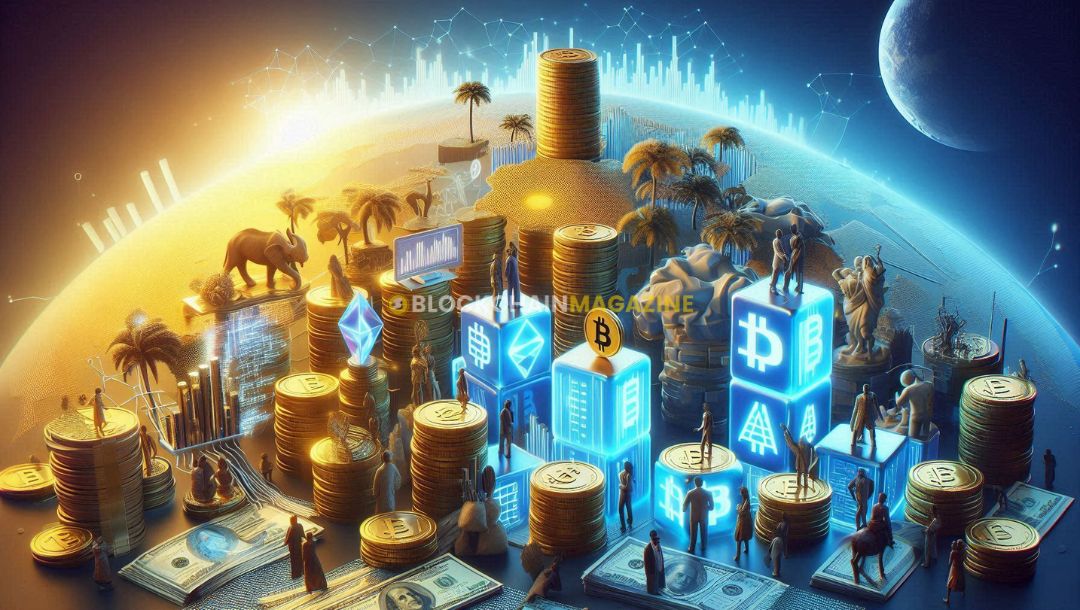Advantages of the merger of 5G and Blockchain
Analysts have anticipated the implications of the Internet of Things (IoT) for several years. However, there have been two main roadblocks to its success: capacity and security.
Major carriers like AT&T and Verizon will introduce the latest generation of cellular mobile communications, i.e., 5G, which will be presented by major carriers like AT&T and Verizon. According to analysts, the 5G platform brings a high data rate, reduced latency, energy savings, cost reduction, and higher system capacity.
The combination of 5G and blockchain technology has the power to unleash a surge of economic value. To understand this relation between 5G and blockchain, one must consider the relationship a multi-level one. The potential of 5G coverage through its reduced latency, high speeds, and capacity allows IoT devices to become widely used. Simultaneously, these devices can use critical features like security, decentralization, immutability, and consensus arbitration of blockchains as foundational layers.
As a base or foundational layer, blockchains can provide consensus and security. At the same time, most IoT transactions and contracts occur on second-layer networks, with the opportunity to settle payment channels and transaction disputes on-chain. However, the network capacity of IoT will be enabled by the potential of 5G coverage.
Furthermore, 5G will have a direct impact and would assist blockchains by increasing node participation and decentralization and allowing for shorter block times, driving forward on-chain scalability — all of which, in turn, further supports the IoT economy.
Network providers have started introducing 5G within selected US cities, while global coverage will come online by 2020.
The advantages of 5G are its high speeds, capacity, low latency, and ability to connect with many devices. Latency means the time between when a signal is sent and received. In the blockchain, latency is when a transaction is broadcast and received by nodes. However, for IoT achieving low latency is critical if devices are going to communicate without experiencing long lag times.
When talking about automation, it is a stereotype to think about robots replacing paid jobs currently done by humans. However, in reality, the scope of automation may eventually be relatively broader, including replacing chores and unpaid minimal tasks.
The 5G rollout will encompass an explosion in transactions and payments between these devices. Such volumes will likely reduce the current centralized and decentralized financial infrastructure capacity. Also, malicious devices could cause chaos within networks, empowered by their interconnectivity.
Public Blockchain can be used as a foundational layer for settling disputes between IoT devices that cannot settle transactions or smart contract conditions. Since these devices can transact with money, establishing an underlying protocol layer with robust security is paramount. Blockchains can be very suitable for this.
Unfortunately, blockchains cannot directly solve the second problem of scalability. The extent of IoT means that decentralized blockchain architectures cannot handle the necessary throughput. It is possible and preferable to defer the majority of the transactions to layer two protocols like the Lightning Network that operate on top of blockchains through payment channels or sidechains.
Blockchains can directly benefit from 5G in terms of functionality and performance—for example, smart contracting. Blockchain smart contracts mainly depend on oracles. These oracles transfer external data to the agreement. This information can only be transmitted with internet access. 5G can facilitate these oracles in remote areas where they otherwise would not be possible.
Also, due to latency reductions, developers would have more space to experiment with cuts in block times, thus increasing on-chain throughput. In return, this would offer far better support for IoT devices using blockchains for settlement, consensus, and security.
Stay informed with daily updates from Blockchain Magazine on Google News. Click here to follow us and mark as favorite: [Blockchain Magazine on Google News].
Get Blockchain Insights In Inbox
Stay ahead of the curve with expert analysis and market updates.
latest from tech
Disclaimer: Any post shared by a third-party agency are sponsored and Blockchain Magazine has no views on any such posts. The views and opinions expressed in this post are those of the clients and do not necessarily reflect the official policy or position of Blockchain Magazine. The information provided in this post is for informational purposes only and should not be considered as financial, investment, or professional advice. Blockchain Magazine does not endorse or promote any specific products, services, or companies mentioned in this posts. Readers are encouraged to conduct their own research and consult with a qualified professional before making any financial decisions.

 Bitcoin
Bitcoin  Ethereum
Ethereum  Tether
Tether  Solana
Solana  XRP
XRP  Dogecoin
Dogecoin  USDC
USDC  Cardano
Cardano  Lido Staked Ether
Lido Staked Ether  TRON
TRON  Avalanche
Avalanche  Toncoin
Toncoin  Stellar
Stellar  Shiba Inu
Shiba Inu  Wrapped stETH
Wrapped stETH  Wrapped Bitcoin
Wrapped Bitcoin  Polkadot
Polkadot  Chainlink
Chainlink  Bitcoin Cash
Bitcoin Cash  WETH
WETH  Sui
Sui  NEAR Protocol
NEAR Protocol  Pepe
Pepe  LEO Token
LEO Token  Litecoin
Litecoin  Aptos
Aptos  Uniswap
Uniswap  Wrapped eETH
Wrapped eETH  Internet Computer
Internet Computer  Hedera
Hedera  USDS
USDS  Cronos
Cronos  POL (ex-MATIC)
POL (ex-MATIC)  Ethereum Classic
Ethereum Classic  Render
Render  Artificial Superintelligence Alliance
Artificial Superintelligence Alliance  Bittensor
Bittensor  Ethena USDe
Ethena USDe  WhiteBIT Coin
WhiteBIT Coin  Stacks
Stacks  Bonk
Bonk  Dai
Dai  Arbitrum
Arbitrum  Filecoin
Filecoin  Cosmos Hub
Cosmos Hub  OKB
OKB  MANTRA
MANTRA 



